Sachiko Tsunoda-Bedford comes from Yatsushiro city, Kumamoto prefecture in southern Japan. In July 2013, she married Ryan Giralt Bedford, who worked as an English teacher on the JET Program for 3 years in her hometown, and made the move to Washington, DC. Since coming to the US she’s been going to English classes, volunteering, making friends, working at the Japan-American Society of Washington, DC, and contributing to the JETAADC blog’s “I <3 JAPAN” series.
Hello everyone. It’s already September! Today I would like to talk about an experience I had learning about Chado – Japanese Tea Ceremony – in the US. I actually took a Chado class after school for about 4 months when I was a high school student in Japan. Why did I want to learn about Japanese culture? It was because I didn’t know anything about Japanese culture. Also, I was planning to go to the UK to volunteer for one year after graduation. So I wanted to learn more about my country before traveling abroad, and Chado seemed a great way to introduce people to Japan.
Although it was impossible to learn Chado in just 4 months, I do remember some of the customs. For example, you turn the tea bowl to face the guest when you serve, holding the bowl with both hands. You give thanks to the bowl of tea and to the host before you take a sip. There are even three different ways to bow in Chado: Shin(真) is deepest bow, Gyou (行) is the middle level, and Sou(草) is a very slight nod.
Since I moved to the US and started working at JASW, my desire to learn Chado got stronger and stronger. Luckily, there is a Chado class, (Chado Urasenke Tankokai Washington DC Association) on the 2nd floor of my workplace. I’ve been studying Chado there after work since June.
I’m still learning a basic way of tea ceremony call Bon Ryaku Temae (盆略点前), which uses a round tray as shown in photo 1. There is a saying from Sen no Rikyu (1522 – 1591) the man who has had the most profound influence on Chado:
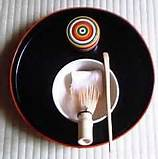
“Learn on, progress to ten, and then go back to one.”
「稽古とは一から習い十を知り、十よりかえる元のその一」
It means that as you learn from the beginning and practice to get to an advanced level, in the meantime you will realize the essence of the lesson and remember the spirit and energy that got you studying in the first place. I want to always remember this phrase.
During the tea lesson, students aren’t allowed to take notes or photos. The way of tea has been taught by oral instruction for 500 years. There is so much information and books about tea ceremony, however you cannot learn from those things how to move your hand and use the tools of tea sets to look graceful.
Last June, I joined a tea ceremony with JETAADC members. Some of them said that it was a great opportunity to visit such as a beautiful tearoom in DC. The room was very relaxing and there was a peaceful atmosphere during the ceremony.

Photo with tea masters and JETAADC members
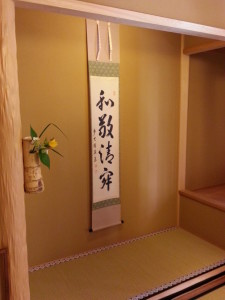
Kakejiku is placed in the Toko no Ma room. It says 和敬清寂(Wa kei Sei Jaku) . This is the most important element of the tea ceremony. Wa means harmony, Kei means Respect, Sei means purity and Jaku means tranquility.
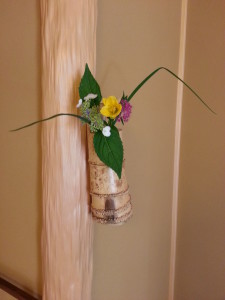
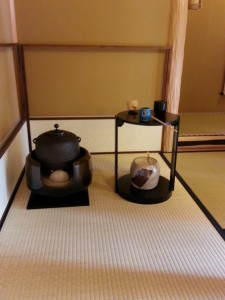
I think Chado is not just a way of tea. It contains appreciation for nature, the seasons, and gratitude for the moment when sharing tea with your friends, family and guests peacefully. After I master Chado, I want to invite people from all over the world to my tea ceremony. I think it will take for 30 or 40 years? hehe
Thank you for reading my blog!

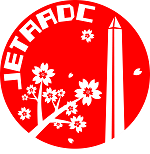
Leave a Reply